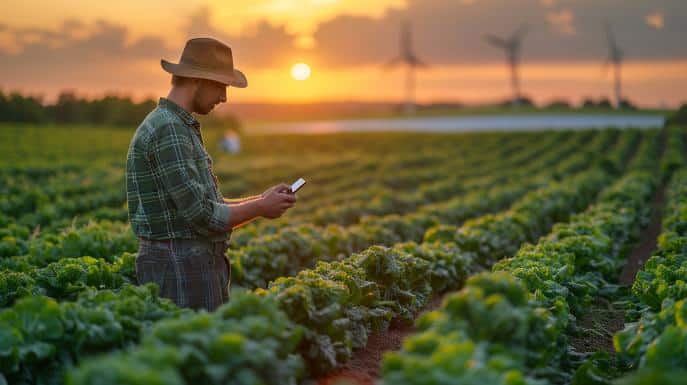On the threshold of a greener dawn, sustainable agriculture stands as a beacon of hope for our planet. By interweaving ancient practices with contemporary innovations, this cultivation method is not just a means of production—it is a promise for a more fertile and harmonious future. In “Sustainable Agriculture: Essential Practices,” we invite you to explore techniques such as crop rotation and conservation agriculture. These are not simple strategies: they are the foundations for a legacy of resilience and reverence for the land that sustains us. Embark with us on this journey that harvests more than food: it cultivates balance and well-being for future generations.
What are the main practices and techniques of sustainable agriculture?
Crop rotation is a key technique for sustainable agriculture, helping to break pest cycles and improve soil health. Crop rotation consists of alternating crop species planted in the same field, preventing the depletion of specific nutrients in the soil and blocking the spread of pests and diseases that specialize in specific crops.
Conservation agriculture involves practices such as minimum tillage and no soil disturbance, which minimize erosion and keep carbon stored in the soil, contributing to soil health and climate change mitigation. Cover crops, in turn, are planted to cover the soil rather than being harvested and help protect and enrich the soil, as well as assist with water and weed management.
How do organic agriculture and integrated resource management benefit the environment?
Organic agriculture and integrated resource management contribute substantially to environmental health. For example, organic farming methods employ natural alternatives to reduce dependence on pesticides and synthetic fertilizers, mitigating environmental impacts and preserving biodiversity. Likewise, integrated pest management includes strategies that control pests through sustainable means, rather than resorting to harmful chemicals. For water efficiency in agriculture, techniques such as drip irrigation and rain harvesting are essential, especially given the growing global challenges regarding water resources.
How do biodiversity and fair trade practices strengthen sustainable agriculture?
Biodiversity in agricultural systems is vital for sustainable agriculture as it offers robustness against pests, diseases and climate change. Fair trade practices ensure fair wages and contribute to local economic stability, strengthening family farming and small producers, who play a crucial role in promoting sustainability. These sustainable practices, including certification of sustainable products, positively impact both the environment and agricultural communities.
What are the challenges and future prospects for sustainable agriculture?
The challenges of transitioning to sustainable agriculture include high initial costs and possible short-term production declines. However, practices such as regenerative agriculture promote a reduced environmental impact and help combat climate change. Education focused on sustainability and supporting policies are essential to adopt these practices in a lasting and effective way, promoting sectoral evolution towards ecologically correct and socially fair methods.
In this article, we explore the sustainability practices that are redefining agriculture. From crop rotation to organic farming, we cover vital techniques for soil preservation and natural resource management. We also highlight the importance of biodiversity and fair trade, illustrating how each contributes significantly to broad sustainability. Although challenges remain, it is through education and the implementation of low-impact, regenerative methods that we can envision a promising future for sustainable agriculture. This path towards more conscious agricultural practices will undoubtedly bring lasting benefits to the environment and society as a whole.
FAQ
What is crop rotation and how does it benefit sustainable agriculture?
Precision = Crop rotation is the process of alternating different types of crops in the same field over time. It benefits sustainable agriculture by interrupting pest cycles, improving soil health and preventing depletion of specific nutrients.How does conservation agriculture contribute to sustainability?
Precision = Conservation agriculture contributes to sustainability by minimizing soil erosion and keeping carbon stored, using practices such as minimum tillage and no soil disturbance, as well as using cover crops to protect and enrich the soil.What are the advantages of organic farming for the environment?
Precision = The advantages of organic farming for the environment include a reduction in dependence on pesticides and synthetic fertilizers, which mitigates environmental impacts and preserves biodiversity. Furthermore, it promotes integrated pest management and efficient water use strategies, such as drip irrigation and rain harvesting.
How do biodiversity and fair trade practices affect sustainable agriculture?
Precision = Biodiversity increases the resilience of agricultural systems against pests, diseases and climate change, while fair trade practices ensure fair wages and the economic stability of local communities, supporting family farmers and small producers in promoting sustainability.What are the main challenges facing sustainable agriculture?
Precision = The main challenges faced by sustainable agriculture are the high initial costs for implementing sustainable practices and the possible reduction in production in the short term. Overcoming these challenges is feasible through sustainability education and supportive policies that encourage the adoption of regenerative and sustainable practices in the long term.



